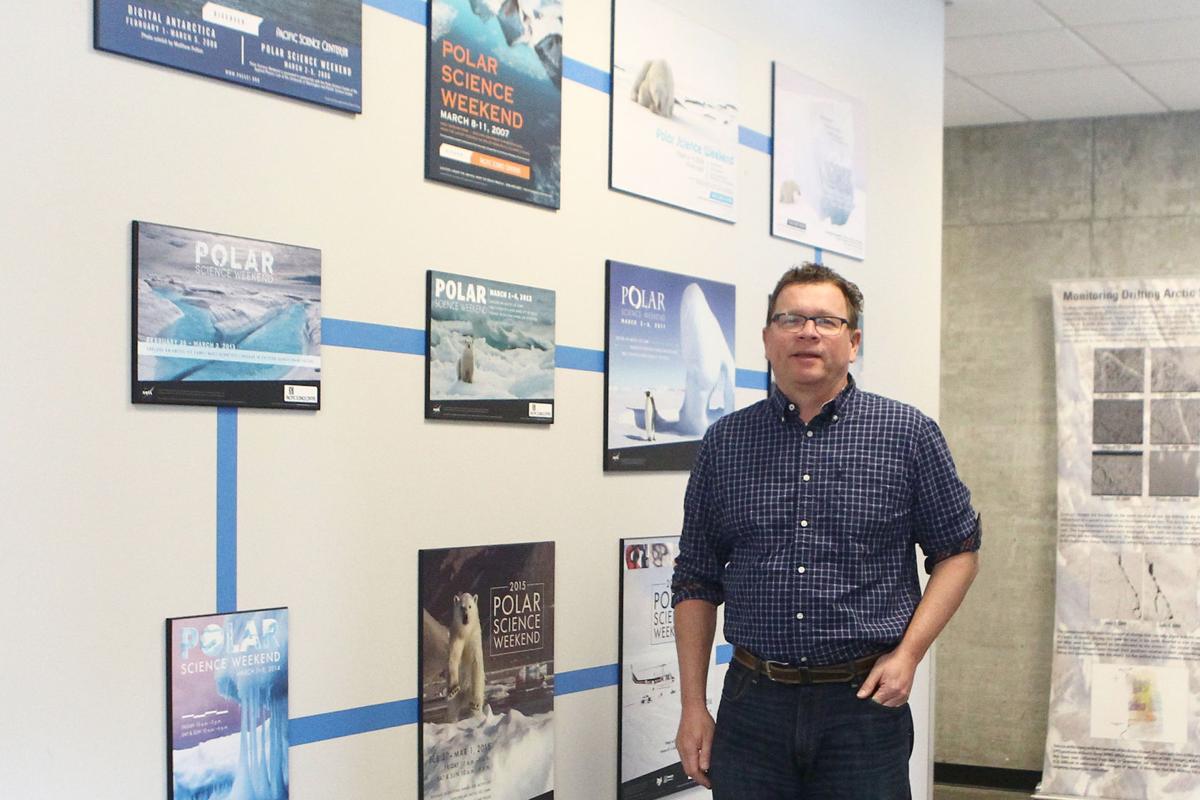Rising sea levels and reduction of atmospheric ozone are often the first cited pieces of evidence for global warming and the melting of the Arctic shelf, but previous models for projecting decline in Arctic sea ice over the past few decades have been lenient, as Arctic sea ice has declined significantly faster than estimated.
A new study from the UW, the University of California Santa Barbara (UCSB), and other federal scientists has shown that 30 to 50 percent of Arctic sea ice decline is due to natural variability in atmospheric weather since 1979.
The study, “Influence of high-latitude atmospheric circulation changes on summertime Arctic sea ice,” was published in the scientific journal Nature Climate Change.
“This study has a fundamentally new methodology of how you look at natural variability and its effects on something like sea ice,” said Axel Schweiger, chair of the UW’s Polar Science Center and contributing author of the study. “When you have a system that’s not forced, it creates this internal variability. It basically makes its own weather.”
Other models used by scientists changed various aspects of real-world weather patterns. The models had their own unique hotspots, El Niños and La Niñas, heatwaves, and other weather variables. The old model simulation would run multiple times and the results would be averaged together to predict sea ice loss based on a common increase in greenhouse gases.
In this vein, scientists’ previous models were primarily tailored toward anthropogenic forcing, or human gas contributions to climate change, which fell short of real-world sea ice decline by a significant amount. Summer ice, measured in September during peak decline, was melting much faster than previously expected, which spurred the proposal for the study.
Qinghua Ding, principal author of the study and associate professor at UCSB, had previously worked with another co-author of the study, David Battisti, a professor of atmospheric sciences at the UW. The duo’s prior study was published in Nature Geoscience and provided some framework for the effect of atmospheric weather patterns on sea ice, finding that tropical sea surface temperature changes accounted for Antarctic warming.
Ding, Battisti, and Schweiger’s interests came together when they investigated whether circulation patterns and other atmospheric variables affected sea ice decline significantly. They proposed that new models, ones that replicated real world atmospheric weather patterns since 1979, could lead to answers about the discrepancy between the previous model’s ice decline expectations and the much faster real world decline.
At first glance this study might seem to imply man-made climate change does not have as large of an effect on Arctic ice as originally thought, but it is in fact far from it. If 30 to 50 percent of sea ice decline is due to natural variability, that means 50 to 70 percent is due to anthropogenic forcing.
“With climate change, you have forcing from greenhouse gases [and that] forcing results in warming and sea ice loss,” said Stephen Po-Chedley, a recent Ph.D graduate of the UW who contributed to the study. “But you also have natural swings in sea ice and temperature.”
Po-Chedley helped look at the model data from CMIP5, the Couple Model Intercomparison Project, which is used by climate scientists to help understand what the model contributions via forcing were for the study.
“What this study tries to do is partition the changes in sea ice that result from this long-term forcing from greenhouse gases versus sea ice changes that comes from weather and natural changes in weather,” Po-Chedley said.
Man-made gas emissions and other activities still plays a significant role in climate change, and this study does not discount it. All it does is reconcile the discrepancy between the observed and expected outcome. This should make for more accurate, and possibly more dire models of future ice loss, as anthropogenic climate change will keep pushing sea ice decline further and further, with far reaching consequences.
“One part that was interesting about it is that, from the scientific perspective, it was not that unusual or surprising to find that a significant part of sea ice loss was due to natural variability,” Schweiger said. “You have to imagine the Arctic Ocean is about 3 percent of the globe, and the smaller the area, the more likely changes are due to natural variability.”
Arctic sea ice loss is considered by many to be a signpost of global warming, and a canary in the coal mine for more dramatic climate shifts in the future. Its blistering pace outstripping models was, and still is, worrisome to the scientific community.
Reach reporter Zackary Bonser at science@dailyuw.com. Twitter: @ZackaryBonser



